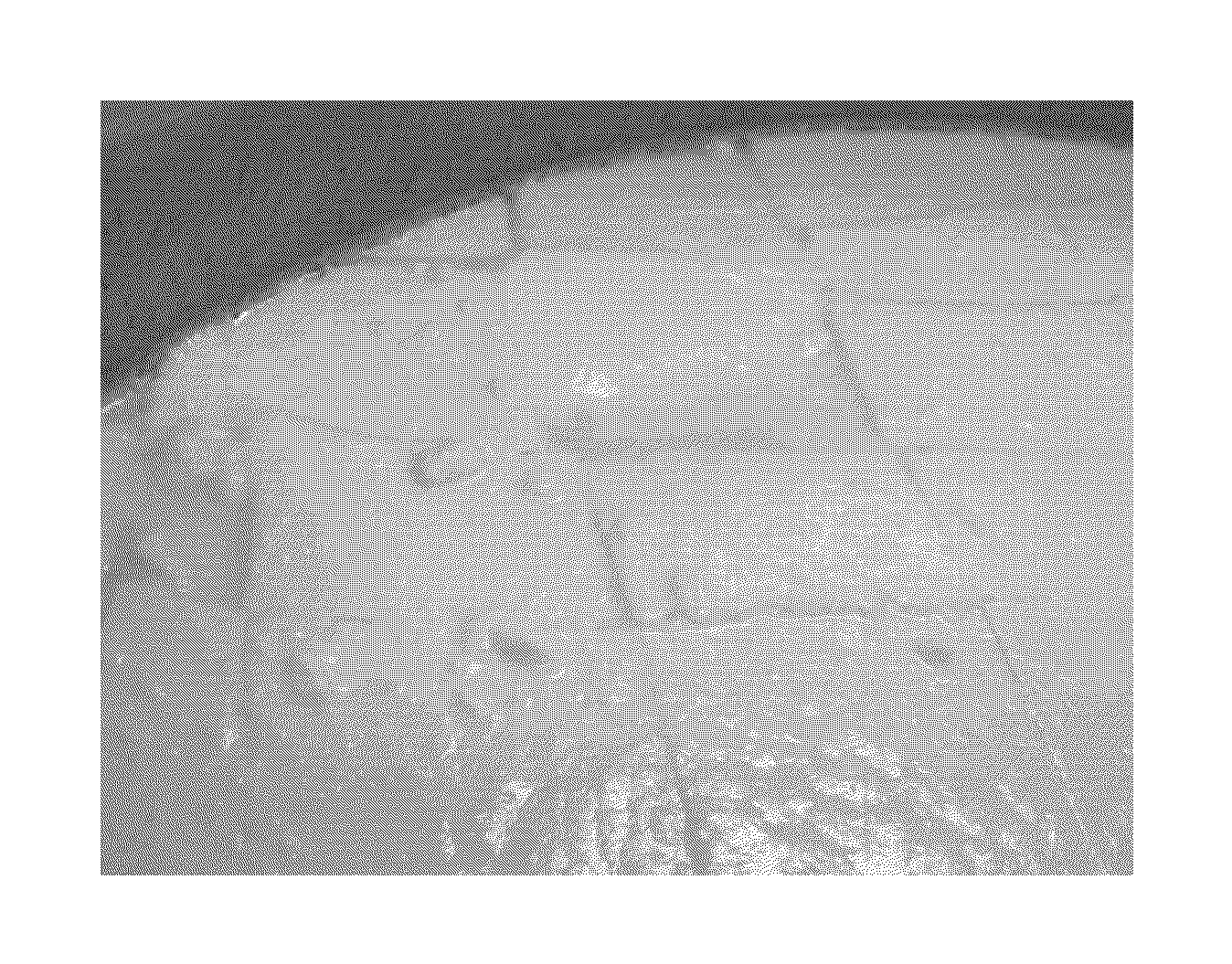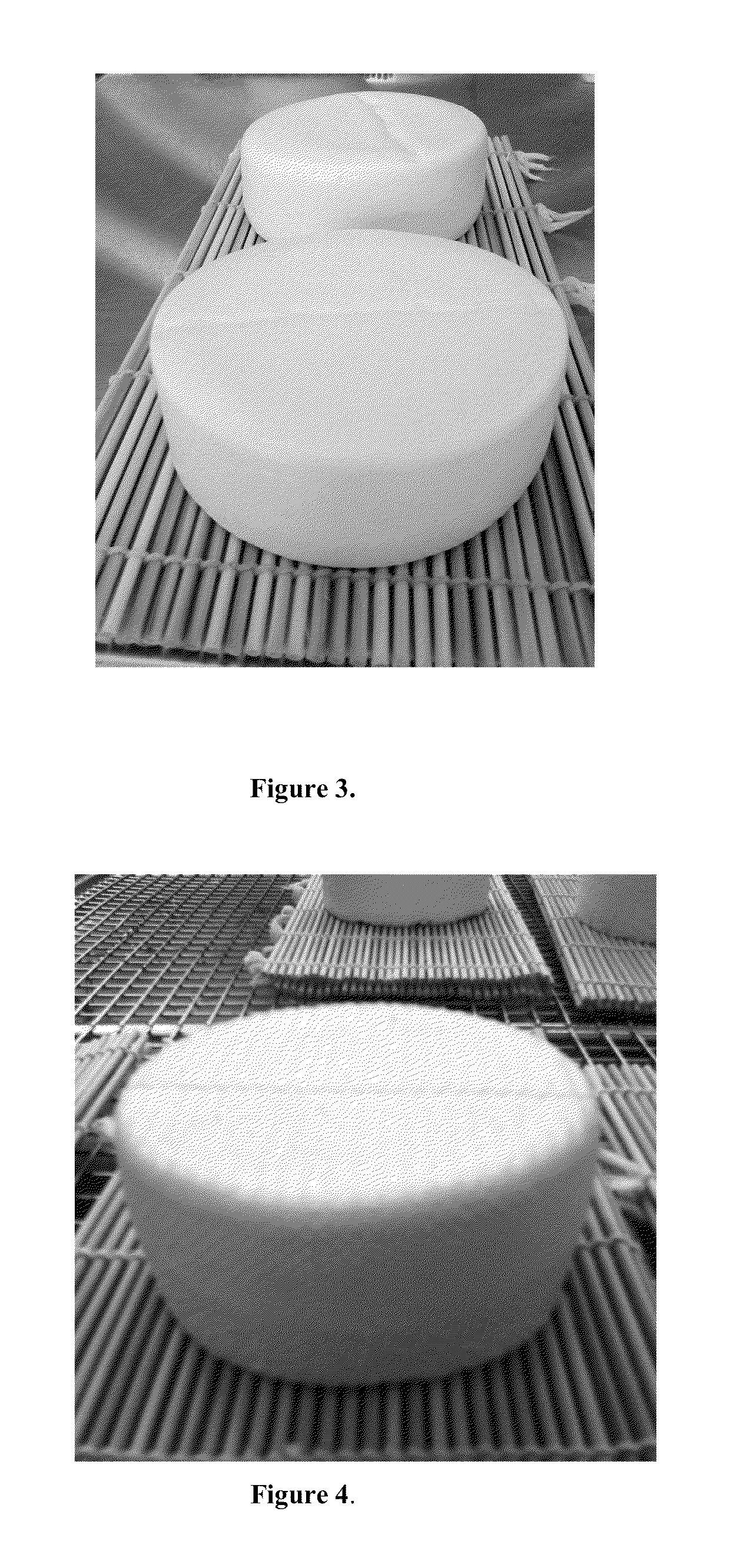Methods and compositions for consumables
a technology of consumables and compositions, applied in the field of consumables methods and compositions, can solve the problems of increasing the osmotic pressure of the colon contents, increasing the osmotic pressure of the colon, and rennet being not an effective agent for inducing non-dairy proteins or emulsions, so as to enhance the flavor and/or aroma and/or texture of the cheese replica, and enhance the flavor and/or aroma and/or textur
- Summary
- Abstract
- Description
- Claims
- Application Information
AI Technical Summary
Benefits of technology
Problems solved by technology
Method used
Image
Examples
example 1
The Effectiveness of Transglutaminase in Curdling Various Nut Milks was Compared
[0129]Cashews, almonds, macadamia nuts, brazil nuts were used to produce a slurry, by adding fresh water in a 3:1 weight ratio to the nuts, then blending in a Vitamix 4500 blender at high speed for 2 minutes. Because we found in preliminary experiments that the insoluble solids in the milks at this stage (slurry) inhibited formation of optimal creamy curds and produced a cheese replica with grainy mouth feel the slurry was subjected to centrifugation at 10,000 G for 15 minutes at 4° C. to remove insoluble solids. The liquid supernatant, consisted of two layers, a lighter, creamy, opaque layer and a slightly denser clear to translucent aqueous layer. Liquid supernatant layers were recovered and blended together and the pelleted solids were discarded. The blended supernatants are referred to as “nut milks” (a non-dairy milk). Each of the 4 resulting nut milks and each pair-wise combination at a 1:1 blend, ...
example 2
Preparation of Almond and Macadamia Nut Milks
[0130]Blanching (Surface Sterilization of the Nuts):
[0131]Note: Almonds and macadamia nuts were blanched separately.
[0132]A 30 gallon tilt skillet filled to ½-capacity with fresh water was heated to 212° F. 25 pounds of either almonds or macadamia nuts were dumped into the boiling water bath and left for 30 seconds. The nuts were recovered by draining into a colander then immediately immersed in fresh ice-cold water in a second tilt skillet to rapidly cool them. After rapid cooling the nuts were recovered by draining in a colander and spread on sheet trays to dry.
[0133]Macadamia nuts proceeded directly to the blending process. Almonds were first hydrated as described below before blending.
[0134]Hydration of Almonds:
[0135]The blanched almonds were transferred to Cambro buckets and fresh water was added to a level two inches above the level of the nuts. The buckets were then placed at 36° F. for up to 16 hours. After hydration, the nuts wer...
example 3
Production of a Soft Fresh Cheese Replica
[0145]The ingredients and amounts needed for one batch (about one and a half pieces) of soft fresh cheese replica are listed in Table 2. The recipe can be scaled up or down proportionately.
[0146]Soft fresh cheese replica was prepared by the following procedure:
non-dairy
[0147]Bring pasteurized non-dairy milk formula (see Table 2) to 80° F. in a water bath.
[0148]Sprinkle the mesophilic starter culture (see Table 2) onto the non-dairy milk formula and allow the culture to hydrate for five minutes without stirring. Gently stir in the starter culture with a spatula for two minutes. Hold at 80° F. for one hour.
[0149]Increase the water bath temperature to begin to bring the non-dairy milk temperature to 100° F.
[0150]Optional step: Add microbial “rennet” and / or distilled vinegar (see Table 2), folding gently with a spatula. Hold for 15 minutes.
[0151]Dilute the hydrated transglutaminase (see Table 2) with a small amount of warm non-dairy milk formula ...
PUM
 Login to View More
Login to View More Abstract
Description
Claims
Application Information
 Login to View More
Login to View More - R&D
- Intellectual Property
- Life Sciences
- Materials
- Tech Scout
- Unparalleled Data Quality
- Higher Quality Content
- 60% Fewer Hallucinations
Browse by: Latest US Patents, China's latest patents, Technical Efficacy Thesaurus, Application Domain, Technology Topic, Popular Technical Reports.
© 2025 PatSnap. All rights reserved.Legal|Privacy policy|Modern Slavery Act Transparency Statement|Sitemap|About US| Contact US: help@patsnap.com



